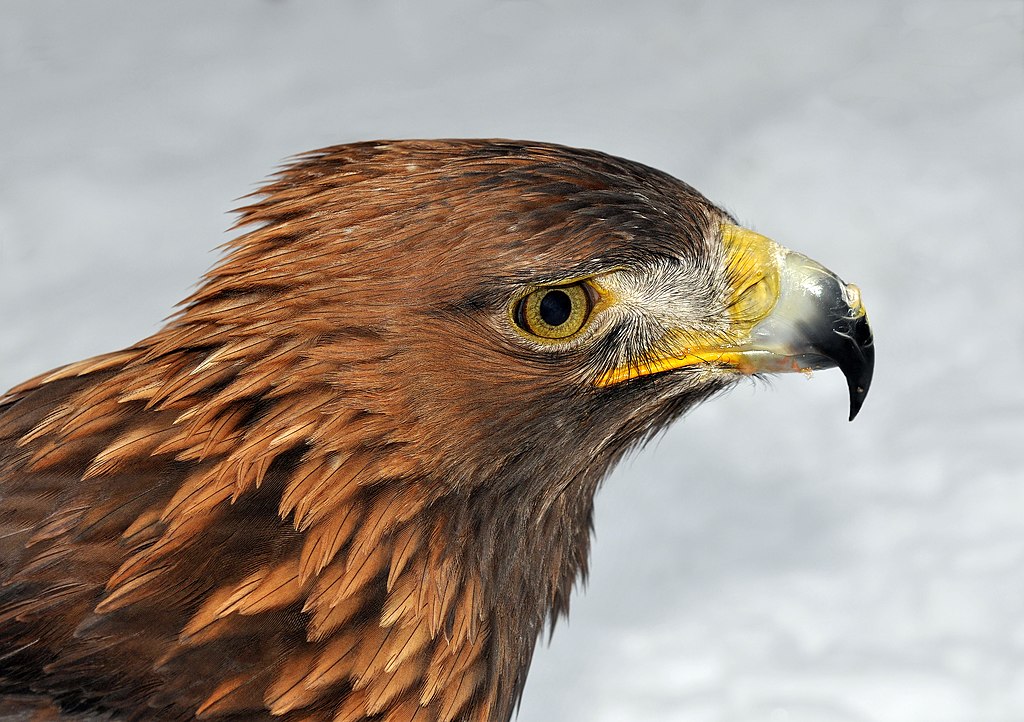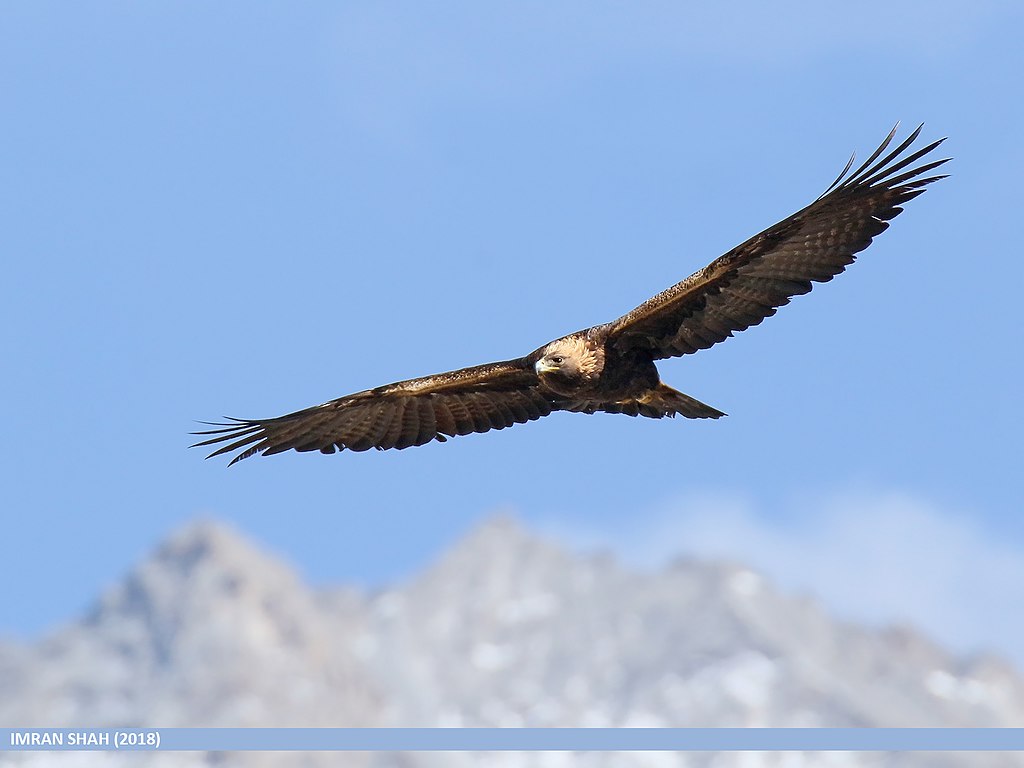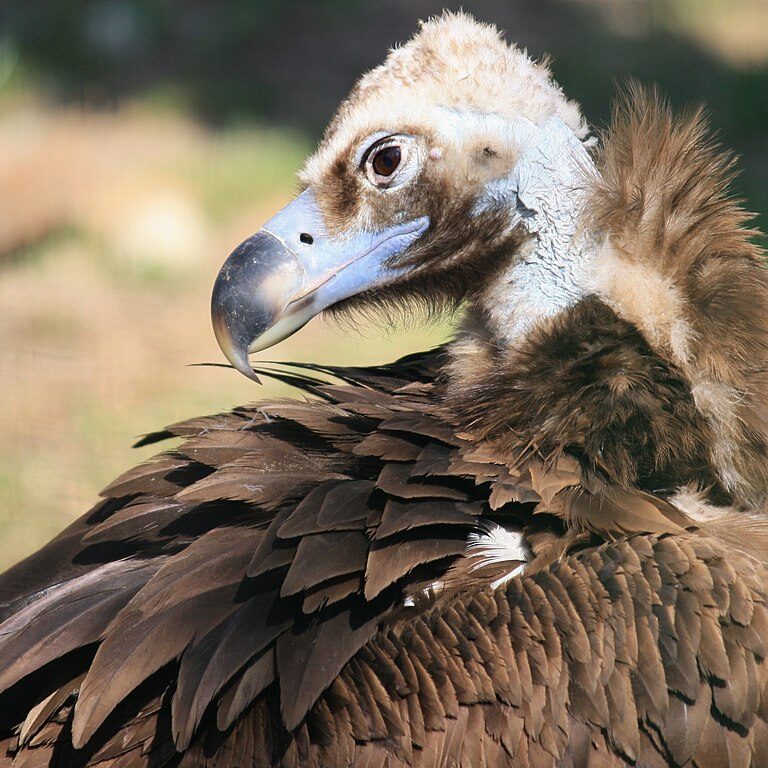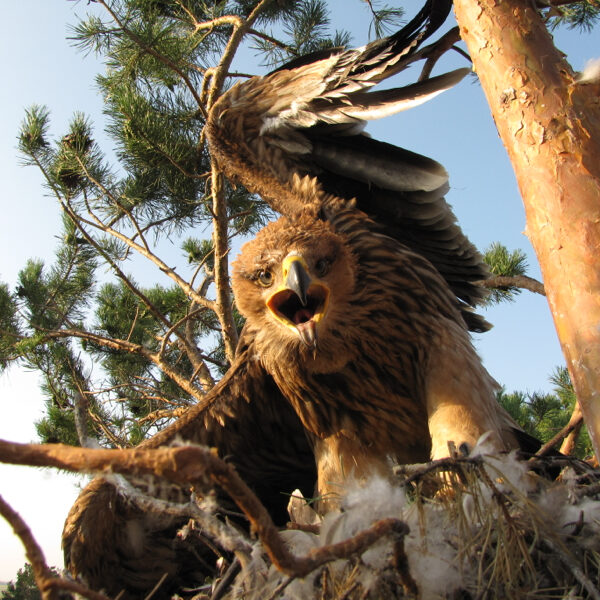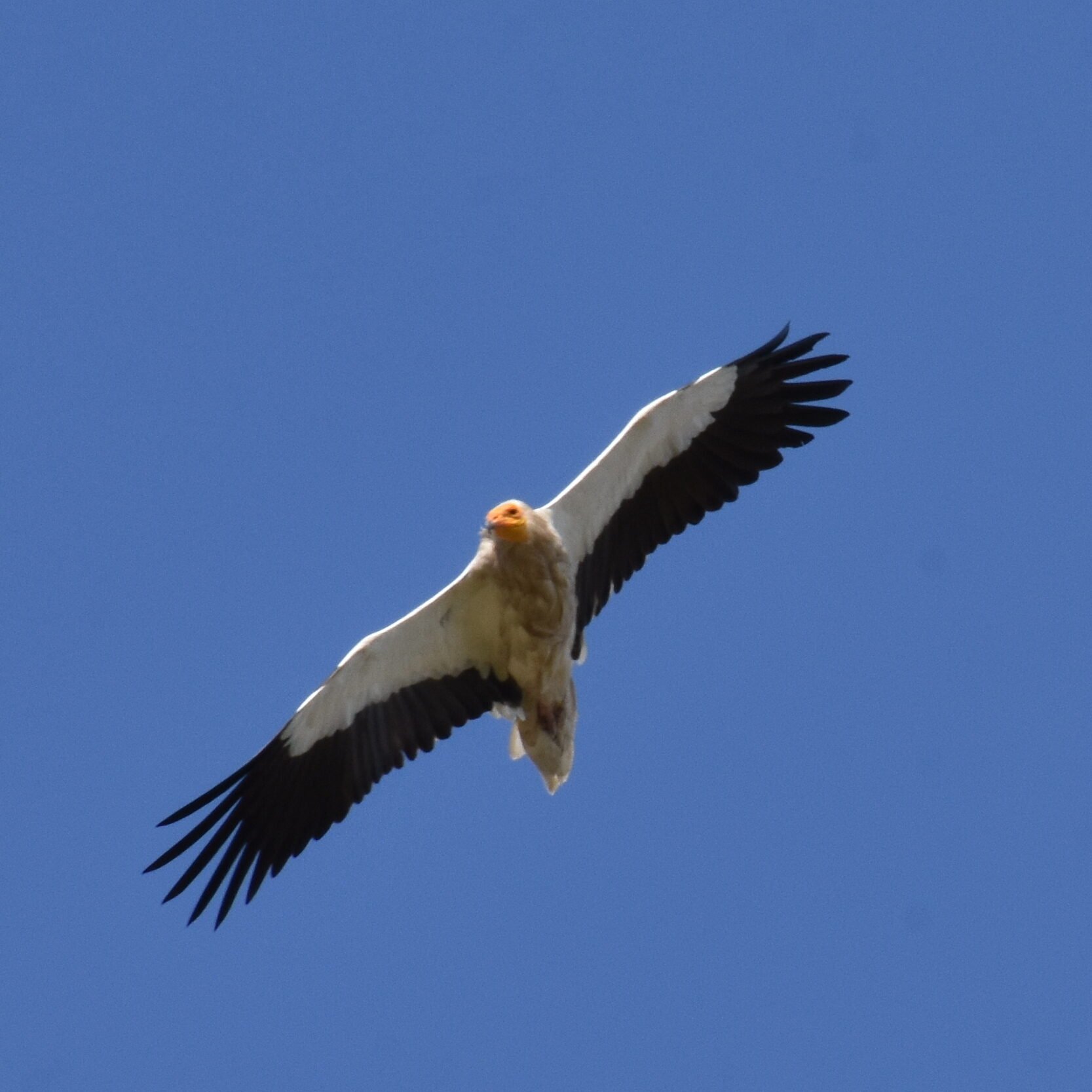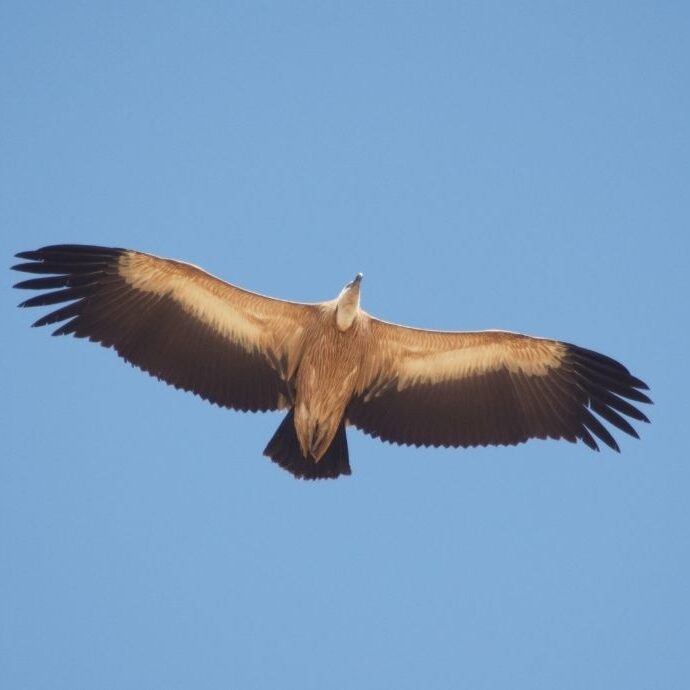Golden Eagle

Golden Eagle, by Igor Karyakin
The golden eagle (Aquila chrysaetos) is a very large raptor, distinguished by the striking golden color of its head and neck. It is a formidable hunter, playing a crucial role in controlling rodent, hare, fox, and other small mammal populations. Golden eagles fly at impressive speeds, reaching between 150-200 mph when diving after prey—one of the fastest birds on the planet. The species can be found from Mexico north through much of North America, as well as in Central Asia, Europe, and northern Africa.
Golden eagle coloration ranges from light brown to brown and depends on the bird’s age. Juveniles have white spots under the wings, which disappear by the time they turn two years old. The raptor’s wingspan, ranging from approximately six to nearly eight feet, is the fifth largest among living eagle species.
For many nations, the majestic golden eagle symbolizes strength and greatness, and it is consequently featured on many government emblems and flags. There are six subspecies, differing slightly in size and plumage, including an Asian Aquila chrysaetos daphanea subspecies (also known as the Himalayan golden eagle or berkut). Widespread in Kazakhstan, this variant is the largest of the golden eagles on average.
The International Union for the Conservation of Nature (IUCN) lists the golden eagle as Least Concern, according to its most recent assessment, conducted in 2021. The Red Book of Kazakhstan added the golden eagle in 1984. Today it is assigned a Category 3 designation—rare with declining numbers.

